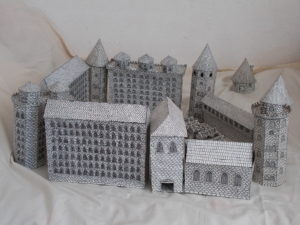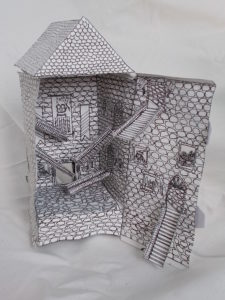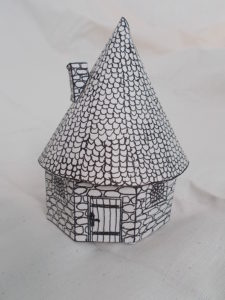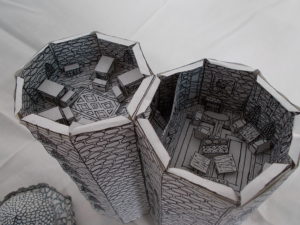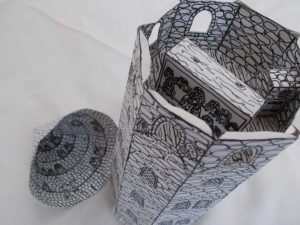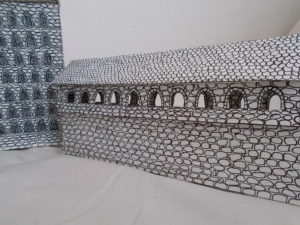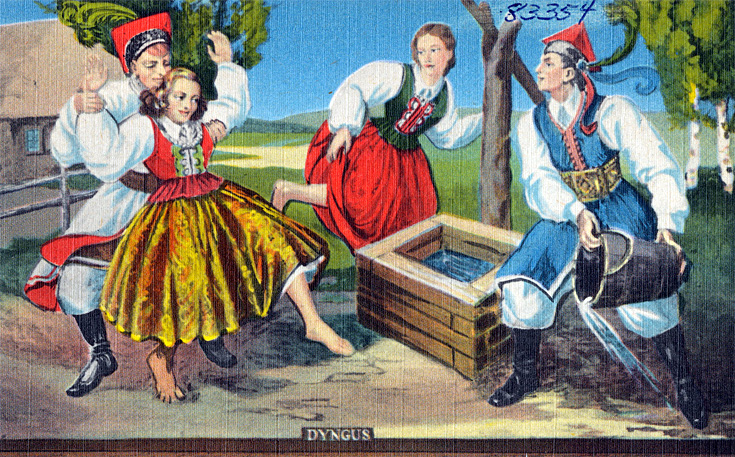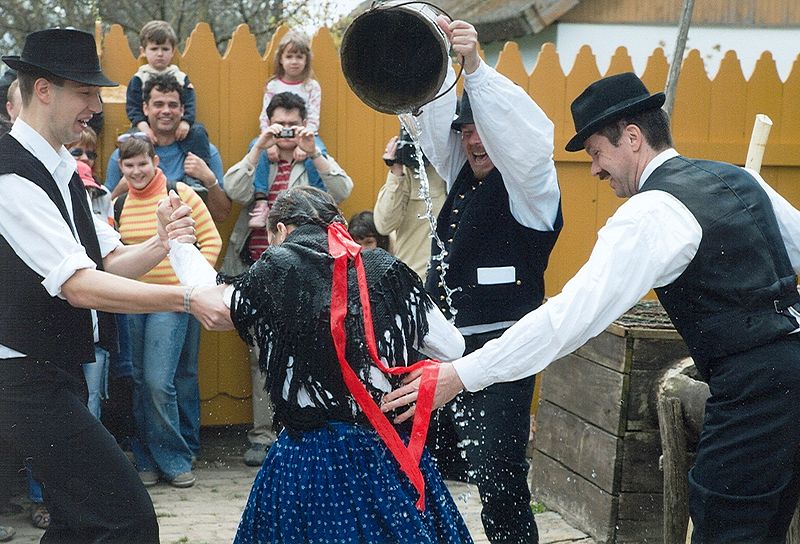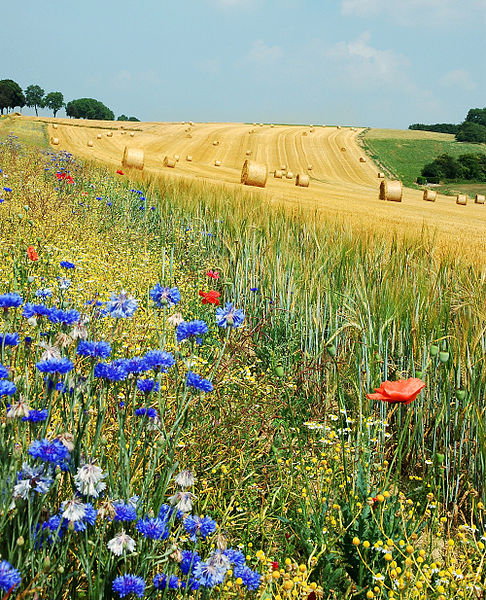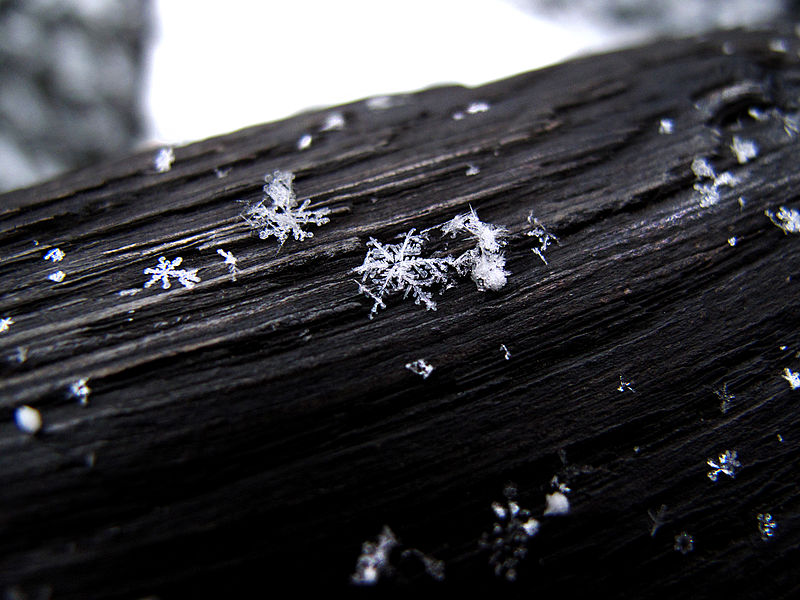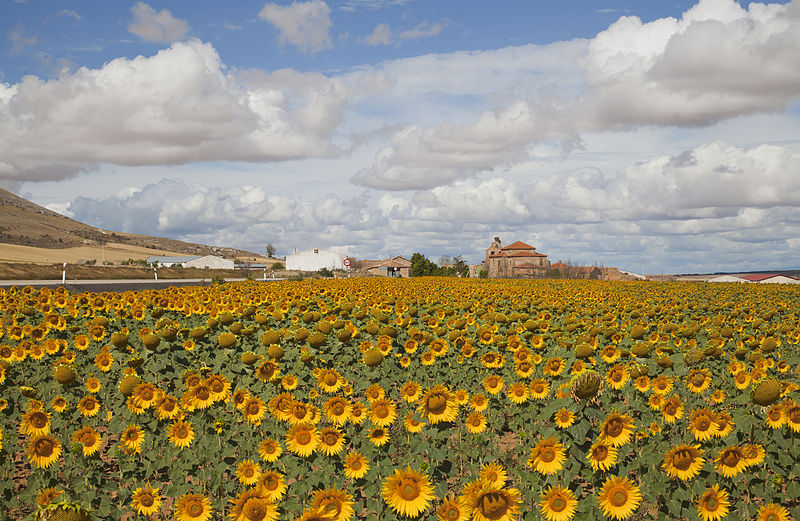Romanian
Hogwarts is called Hogwarts Școala de Magie, Farmece și Vrăjitorii in Romanian. Voldemort is Cap-de-Mort, and Harry is the Boy Who Lived or „băiatul care a supraviețuit”. Muggles are Încuiați, non-magical people of wizard descent or Squibs are noni, half-blood wizards are „sânge-semipur” and Mudbloods are „sânge-mâl”. The 4 houses are Cercetași (Gryffindor, lit. ‘scouts’), Astropufi (Hufflepuff), Ochi-de-Șoim (Ravenclaw, lit. ‘Falcon Eye’) and Viperini (Slytherin, lit. ‘pertaining to vipers’). The Death Eaters are Devoratori ai Morți and Mad-Eye Moody is called Ochi-Nebun Moody. Quidditch is Vâjthaț, the Sorting Hat is called Jobenul Magic care face Sortarea and The Burrow is Vizuina and Diagon Alley is Aleea Diagon. The London wizarding pub The Leaky Cauldron is La Ceaunul Spart and the street Knockturn Alley becomes Nocturnalee (‘Nocturnal Alley’) in the Romanian version.
Czech
In the Czech edition of Harry Potter, Hogwarts is called Škola čar a kouzel v Bradavicích (from bradavice meaning ‘wart’) and the village of Hogsmeade is Prasinky (from prase = pig, swine, hog). Diagon Alley is Příčná ulice, lit. the ‘straight street’, and Knockturn Alley is Obrtlá ulice. The Weasleys’ home The Burrow is Doupě and The Leaky Cauldron is Děravý kotel. The four houses of Hogwarts are Nebelvír (from nebe = ‘sky‘ and lvír -> lev = ‘lion’) for Gryffindor, Hufflepuff is Mrzimor, Ravenclaw is Havraspár (from havran = raven, and spár = claw) and Slytherin is Zmijozel ( zmijozel = ‘adder’, and zmije = snake, viper, and zlo = evil).
Norwegian
The Norwegian edition is interesting from a language aspect, since nearly all names and terms have been changed to a more Norwegian version. Hogwarts is called Galtvort høyere skole for hekseri og trolldom and the village of Hogsmeade is Galtvang (both from ‘galt‘ meaning ‘hog’). Dumbledore is called Humlesnurr, Professor Snape is Professor Slur, Professor McSnurp is Professor McGonagall, Professor Sprout is Professor Stikling and Gilderoy Lockhart becomes Gyldeprinz Gulmedal (lit. ‘Goldprince Goldmedal’) and Hagrid is Gygrid and Dobby the House-elf is Noldus. The Dursleys, who live in Hekkveien 4 (4 Privet Drive), are called Wiktor, Petunia and Dudleif Dumling (dum = dumb, stupid). The Weasleys are called Wiltersen in Norwegian, so Ron is Ronny Wiltersen, Ginny is Gulla, Percy is Perry and Fred and George are Fred og Frank! Hermione Granger is Hermine Grang, Nilus Langballe is Neville Longbottom and Draco Malfoy is Draco Malfang. Diagon Alley is Diagonallmenningen, Knockturn Alley is Spindelsmuget and the shop ‘Flourish and Blotts’ is ‘Snirckel & Blaek‘ (from blekk = ink). The bank Gringotts becomes Flirgott. The Burrow is Hiet and The Leaky Cauldron is Den lekke heksekjel. The 4 Hogwarts houses are: Gryffindor Griffing, Hufflepuff Håsblås, Ravenclaw Ravnklo and Slytherin Smygard.
Danish
The Danish Hogwarts is called Hogwarts Skole for Heksekunster og Troldmandsskab. Diagon Alley is Diagonalstræde (Diagonalstræde is not a pun in Danish, though) and Knockturn Alley is rendered as Tusmørkegyden (lit. ‘Twilight Alley’) . The Burrow becomes Vindelhuset (‘the spiral house’), The Leaky Cauldron is Den Utætte Kedel and Gringotts is called Gringotts Troldmandsbank. The Owlery is Ugleriet. The ghost Moaning Myrtle is Hulkende Hulda. House elves are husalfer. Professor Sprout is called Professor Spire and Gilderoy Lockhart is Glitterik Smørhår (lit. Glittery Butterhair). Professor Horatio Schnobbevom is Horace Slughorn. The subject Divination is Spådom and the art of Apparition is called Spektral Transferens.
Swedish
In Swedish, Hogwarts is called Hogwarts skola för häxkonster och trolldom, Diagon Alley is Diagongränden, Knockturn Alley becomes Svartvändargränden (lit. ‘Blackturner Alley’), the wizarding bank Gringotts is Gringotts trollkarlsbank (or just simply Gringotts). The pub The Leaky Cauldron is Den Läckande Kitteln and The Burrow is Kråkboet (lit.’Crow’s Nest’). The Death Eaters are the Dödsätare and the Sorting Hat is en sorteringshatt. The subject Spådomskonst is divination and Potions is Trolldryckskonst. 12 Grimmauld Place is Grimmaldiplan nummer 12 (the pun in English – ‘grim old place’ – is lost here in the translation) and the Forbidden Forest is Den mörka skogen. The young Voldemort Tom Riddle is called Tom Gus Mervolo Dolder. Bill and Fleur Weasley’s house, The Shell Cottage, is Snäckstugan in Swedish.
If you like the paper Hogwarts castle in this article, it can be purchased on Amazon here: ‘Build your own Hogwarts castle!‘ (ISBN 978-1535422352) http://www.amazon.co.uk/dp/1535422351

